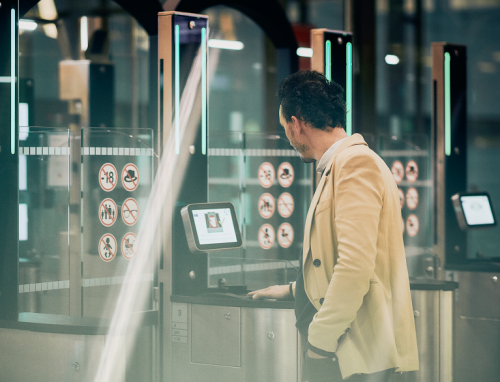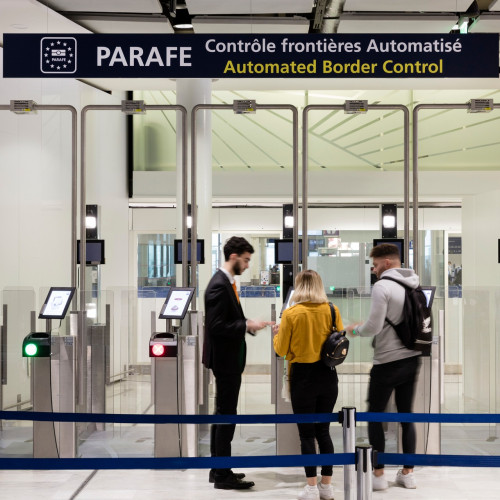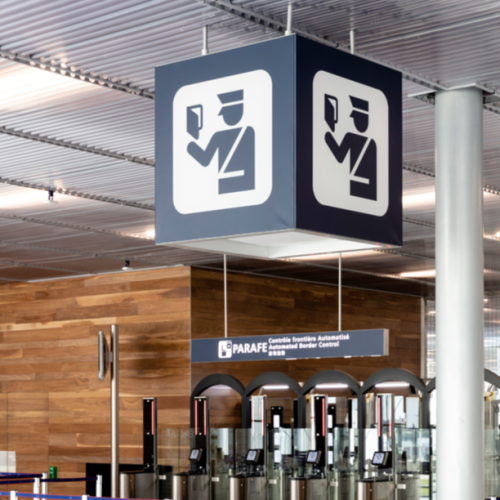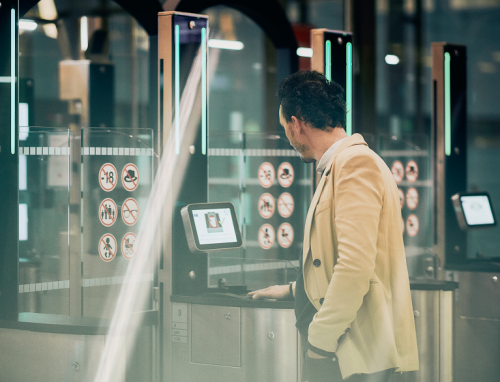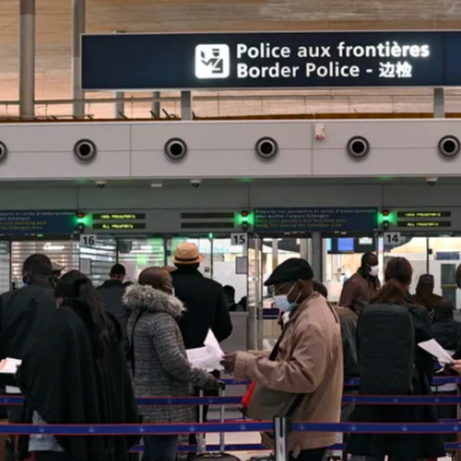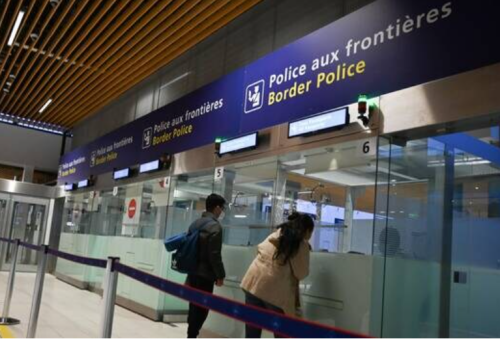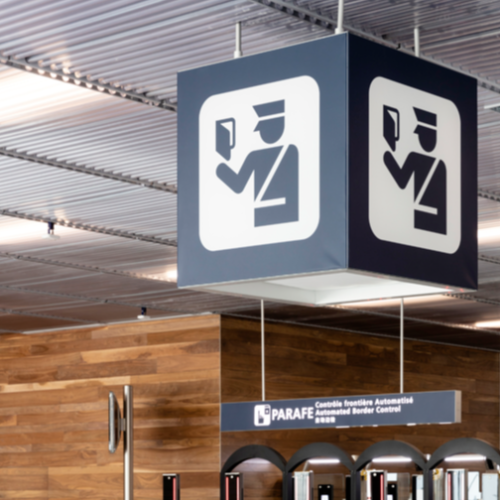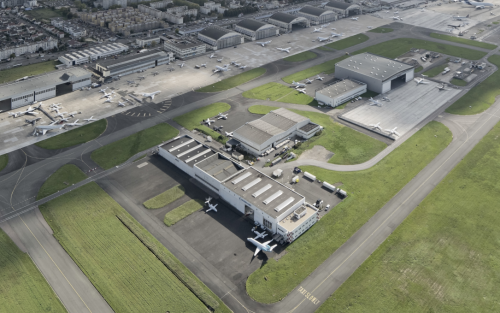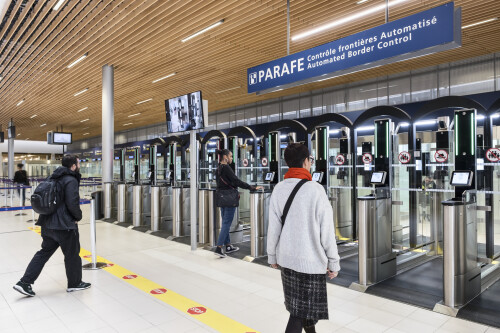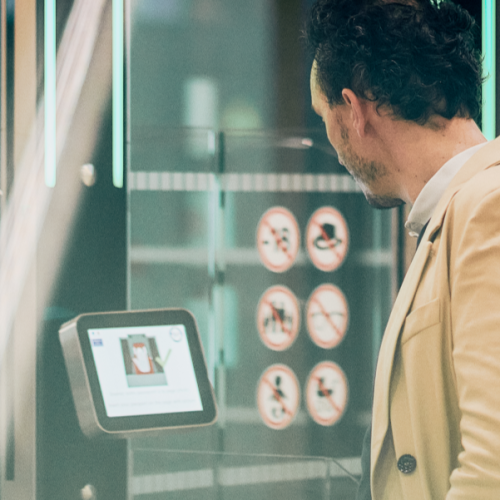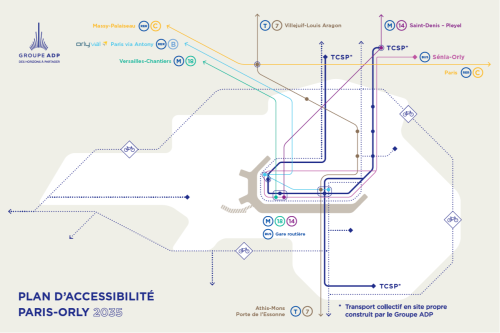The "Direction de la Police aux Frontières" (head of French Border Police) and Groupe ADP have joined forces to draw up a monthly report on the waiting times encountered by passengers at the various border control points at Paris-Charles de Gaulle and Paris-Orly Airports.
General trend observed in September 2023 [1]:
For the record, the maximum waiting times at the Border Police in airports, targeted by the French Prime Minister - during the inter-ministerial council on tourism on 26th July 2017 -, are 30 minutes for European nationals and 45 minutes for non-Europeans.
- At Paris-Charles de Gaulle: out of nearly 4 million passengers on international flights [2], 5% waited less than 10 minutes, 98.7% less than 30 minutes and 99.8% less than 45 minutes.
- At Paris-Orly: out of nearly 1.2 million passengers on international flights, 1% waited less than 10 minutes, 99.8% less than 30 minutes and 100% less than 45 minutes.
Events resulting in waiting times of over 30 minutes [3]:
At Paris-Charles de Gaulle /
Week 35: 7 events impacting approximately 2,900 passengers, with an average waiting time of 50 minutes.
Week 36: 39 events with an impact on approximately 11,700 passengers, with an average waiting time of 46 minutes.
Week 37: 15 events with an impact on approximately 4,000 passengers, with an average waiting time of 45 minutes.
Week 38: 21 events with an impact on approximately 5,500 passengers, with an average time of 40 minutes.
Week 39: 30 events affecting around 13,600 passengers, with an average waiting time of 42 minutes.
At Paris-Orly /
Week 35: 2 events affecting around 280 passengers, with an average waiting time of 33 minutes.
Week 36: 8 events affecting around 1,500 passengers, with an average waiting time of 42 minutes.
Week 37: 1 event affecting around 140 passengers, with an average waiting time of 34 minutes.
Week 38: 5 events affecting approximately 1,200 passengers, with an average waiting time of 39 minutes.
Week 39: 2 events affecting around 190 passengers, with an average waiting time of 34 minutes.
Flashbacks at some events:
- Tuesday, September 5th, at Paris-Charles de Gaulle Terminals 2E and 2F, between 12.35 pm and 1.25 pm. Simultaneous arrivals of several Schengen flights ahead of schedule generated a larger-than-expected flow of passengers, and despite police arming in line with forecasts and the PARAFE airlocks being open, a wait of around 50 minutes affected some 550 passengers arriving at these connecting controls.
- Sunday, September 10th, arrivals at Paris-Charles de Gaulle Terminal 1, between 2.45 pm and 4.30 pm. Coordination problems between Border Police teams at changeover time led to occasional understaffing, with waiting times of up to 80 minutes for around 600 passengers. Added to this, few passengers were eligible for the PARAFE airlocks. To limit waiting times, Paris Airport teams have sought to optimize the use of all control positions.
- Monday, September 25th, arrivals at Paris-Charles de Gaulle Terminal 2E, between 8:00 and 10:00 am. During the morning arrivals peak, despite the availability of almost all PARAFE airlocks (13 out of 15) and the measures deployed by Groupe ADP's hostesses and greeters to maximize the use of these airlocks and balance waiting times between queues, some 1,100 passengers not eligible for PARAFE airlocks waited around 50 minutes.
- Friday, September 29th, arrivals at Paris-Charles de Gaulle Terminal 1, between 8:00 and 11:00 am. All the aubettes were open, with new "student" border guards in training, which slowed down control operations, as traffic was fairly heavy. Some 1,700 passengers waited up to an hour during this period. Passengers with imminent flights were given priority.
|
One-off reinforcements for the Rugby World Cup During the Rugby World Cup, the Border Police at Paris airports were able to count on reinforcements: every day, 70 additional police students were mobilized at Paris-Charles de Gaulle and 30 at Paris-Orly, with the aim of optimally arming checkpoints. |
Details of monthly results for July and August 2023 regarding Paris-Charles de Gaulle and Paris-Orly:

Methodology: real time data from counting sensors
Since 2019, Groupe ADP has deployed tools to monitor and control passenger flows and waiting times. In particular, sensors allowing the number of passengers to be counted in real time in a queue have been deployed to equip the border crossing and safety control areas of Paris Airports.
This is a real-time measurement tool that is automatically updated every five seconds. It counts the number of passengers in a queue by measuring how long the last person to leave the queue has been waiting. Between 80 and 200 sensors are needed to cover an area, depending on its size.
The data is fed into an operational performance monitoring tool that analyses what has happened in an operational day. It is the data extracted from these sensors that is used to set up this barometer.
_________________
[1] At Paris-Charles de Gaulle, between July 19th and August 31st, out of nearly 4.5 million passengers on international flights, 84.4% waited less than 10 minutes, 98.1% less than 30 minutes and 99.5% less than 45 minutes.
At Paris-Orly, out of nearly 2 million passengers on international flights, 93% waited less than 10 minutes, 99.9% less than 30 minutes and 100% less than 45 minutes.
[2] Passengers who crossed a border at departures, connections or arrivals at Paris-Charles de Gaulle or Paris-Orly are taken into account (not therefore passengers on domestic or Schengen flights).
[3] Events impacting more than 50 passengers per calendar week are included. Two occurrences must be separated by 20 minutes, otherwise only one event is counted.









